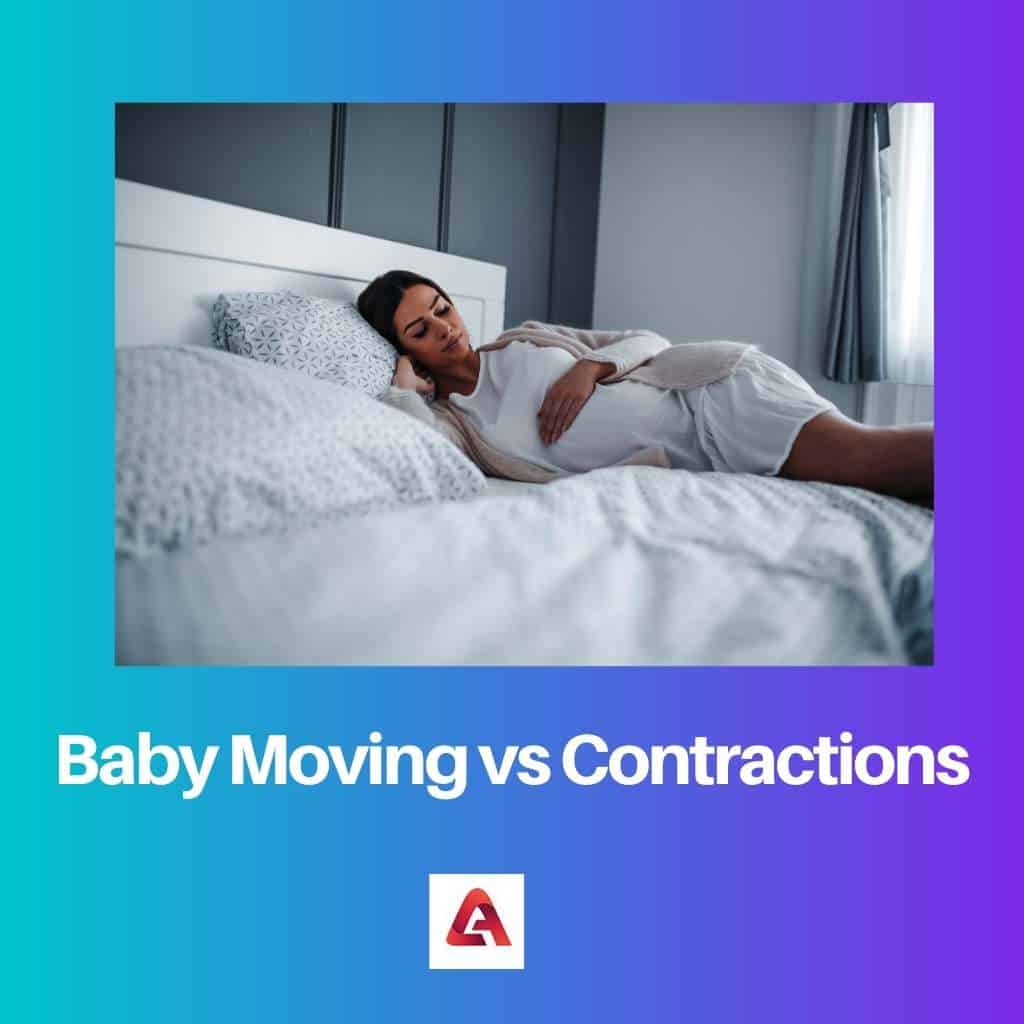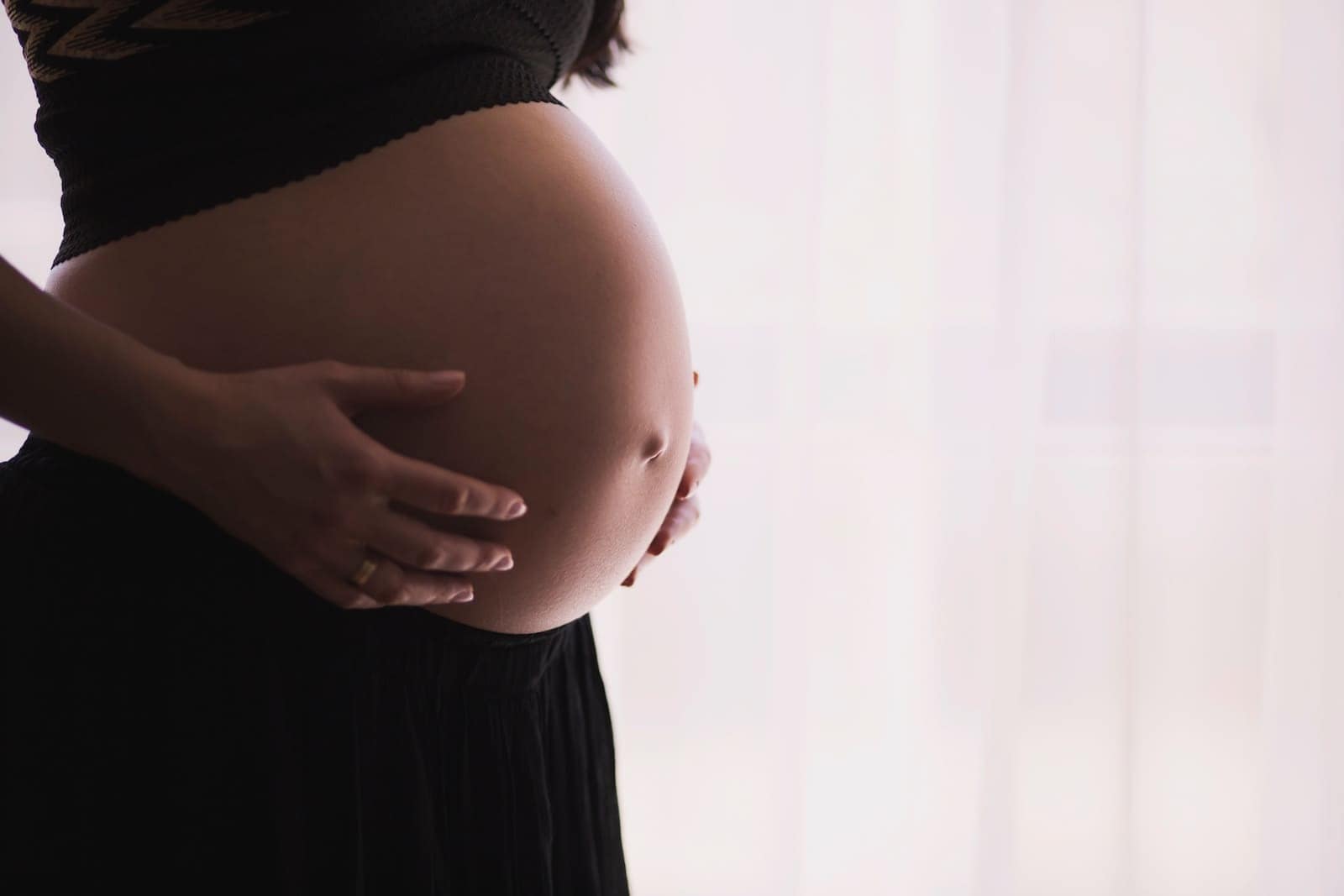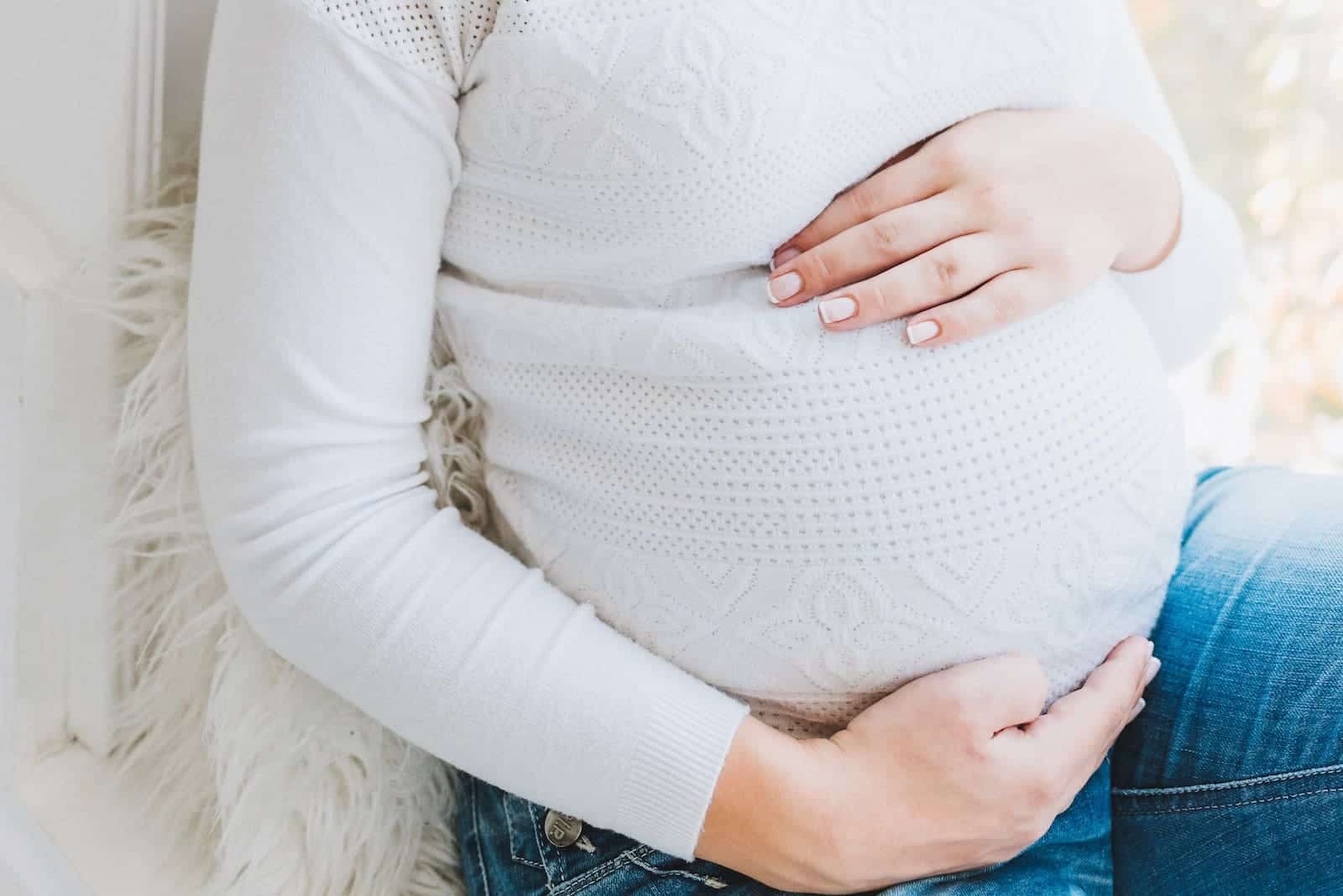Baby moving and contractions are both movements felt by a mother during her gestation period.
It might be a trigger warning to active labour or just the baby playing about in your tummy, reacting to the actions done by the mother outside, such as eating or hearing music.
Key Takeaways
- Baby moving involves the fetus’s movements inside the womb, while contractions are rhythmic tightening and relaxing of the uterus muscles.
- Baby movements are painless, but contractions can range from mild discomfort to intense pain.
- Baby movements occur throughout pregnancy, while contractions increase in frequency and intensity as labor approaches.
Baby Moving vs Contractions
The difference between the baby moving and contractions are that while the baby’s movement shows no indication that the mother might soon enter the labour stage, the contractions depending on their frequency and minutes to seconds apart, can show whether the mother has gone into active labour.

The baby’s movement makes the uterus harden in certain places and leaves the other parts soft to feel from the outside.
This is because the head of the baby or the baby’s butt or shoulder might be pressed up hard against the uterus leading it to feel harder than the rest of the uterine walls.
In contractions, the entire uterus might be hard. This might come in waves of regular or irregular intervals that need to be noted by the mother or her birth coach.
By noting this, the possibility of that contraction being a fake alarm or whether the mother is going into active labour could be deciphered.
Comparison Table
| Parameters of Comparison | Baby Moving | Contractions |
|---|---|---|
| Can Happen Due to | Depends on what the mother is doing on the outside. | Hormonal actions. |
| Whether Could be Self-Induced | Can be self-induced by the mother. | Happens over a course of time. |
| What does it Mean | This means that the baby is healthy and active. | Depending on the times apart and frequency, it could mean active labor or vice versa. |
| Frequency | Not predictable | If not false, predictable (30-20 seconds long and 5-12 minutes apart). |
| Cervical Dilation | No | Yes |
What is Baby Moving?
Baby’s movements are one of those prime factors that give a new mother a great joy that is hard to be understood by others.
For a first-time mom, most fetal movements occur between the 16th and 25th weeks of the gestation period, that is, during the second trimester.
Once a baby starts showing movements, it is called quickening.
The first few times that a baby moves, it might feel like small flutters or strange sensations in the abdomen.
But in the case of second or other consequent pregnancies, the mother knows how to recognize the baby’s movement as soon as it starts.
This is because the mother knows what to expect and is more familiar with the subtle and barely recognizable difference between the baby’s movement and intestinal gas.
By then, the baby would be much stronger, and the chances of the kicks being a flutter are rare, and it could be felt by keeping the hands over the mother’s tummy.
It would be helpful to keep track of the baby’s movements to watch their activities constantly.
Babies tend to move when the mother eats food, which can spike blood sugar levels, not too much to cause pregnancy diabetes, but enough to give the baby a boost and cause them to love around.
Another way is by drinking something cold and sweet. The cold drink along with the sugar, can cause a sudden movement by the baby.
Making the baby listen to music can cause the baby to move too.
Changing the mother’s position might help the baby to tilt into more comfortable positions hence inducing movement.
Even trying to nudge the baby might cause them to move and maybe even give a little nudge back.
Sometimes babies in the uterus might get hyperactive and move a lot. This is also quite normal and has no worrying elements in it.

What is Contractions?
Contractions are a major indication of whether or not you are going into active labour and transition.
When a gestating mother is in true labour, the contractions last for about 30-70 seconds each with a minimum of 5 and a maximum of 12 minutes apart.
But not all contractions need to be true. The false contractions are called Broxton Hicks contractions.
These false contractions can start as early as the 20th week into gestation, giving the mother a false alarm of premature labour.
But false contractions are common to start by the 28th to 30th week.
False contractions don’t indicate labour, which could be differentiated because the contractions are irregular and infrequent.
The Broxton Hicks contractions are a way for the mother’s body to start preparing her uterine muscles and herself for active labour.
A regular and frequent contraction before the due date might be an indication of premature labour. This could happen any time from the 37th week of the gestation period.
During contractions, the entire abdomen will be hard to touch.
Other difficulties a labouring mother faces include backache, pressure built up in the pelvis, and cramping in many parts of the body.
True contractions, in contrast to false ones, are stronger and longer.
After active labour starts, the mother goes into a transition state. In this state, the cervix dilates, and the contraction tightens for about 60-90 seconds with about 30 seconds to 2 minutes apart.

Main Differences Between Baby Moving And Contractions
- While in baby movements, only certain parts of the uterus might seem hard to touch, while in the case of contractions, the whole of the abdomen might seem hard to touch.
- While contractions are almost the same in all expecting mothers, baby movements differ greatly from one baby to another.
- Baby movements could happen at any time regularly or not. But in the case of contractions, it would most definitely be regular and frequent for active labour and vice versa for false labour.
- While baby movements could be confused with the intestinal gas or discomforts, contractions are hard to misinterpret for gas due to the massive cramping and the following pain.
- There are certain changes in the body of the mother as contractions frequency increases, such as cervix dilation and lightheadedness, chills, and vomiting. For a baby moving, there are no such changes in the mother.



